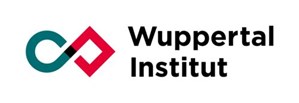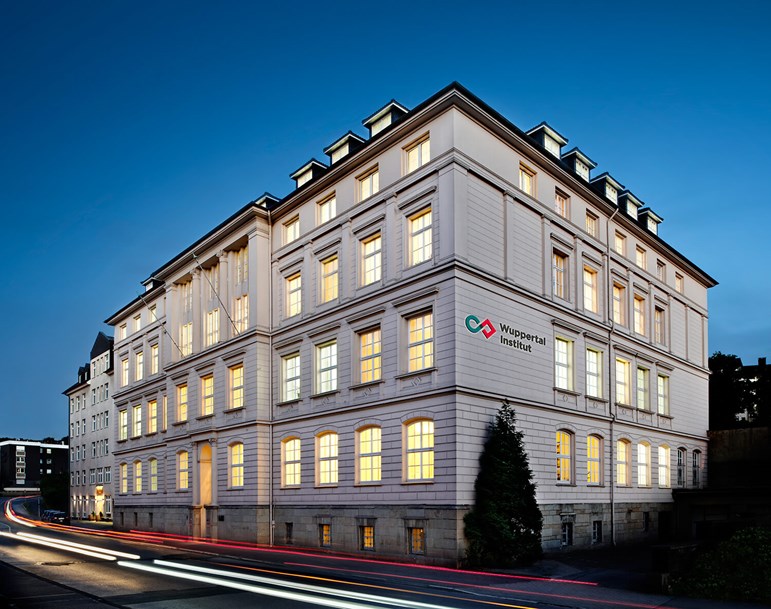Focus on projects, resources and controlling - Wuppertal Institute implements research projects with Blue Ant
The Wuppertal Institute researches and develops models, strategies and instruments for transitions to sustainable development at regional, national and international level. The focus is on resource, climate and energy challenges within their interaction with the economy and society. Analysing and indexing innovations for the decoupling of natural consumption and the development of prosperity forms the main emphasis of our research.

The added value for the company and the individual management levels is immense!MR PRASKI - FINANCE & CONTROLLING DEPARTMENT
We spoke to David Praski, from the Finance & Controlling Department at the Wuppertal Institute, about the introduction of Blue Ant.
Mr. Praski, what position do you hold at the Wuppertal Institute and what are your areas of activity?
I am responsible for the introduction and further development of the Blue Ant software in the company. I have been accompanying this process for almost five years now. I am also active in controlling at the Wuppertal Institute. Of course, Blue Ant plays a central role here today.
What is the core business of the Wuppertal Institute?
The Wuppertal Institute is one of the largest non-university research institutes regarding questions and methods of change in sustainability. The institute was founded in 1991 in Wuppertal and has been represented for several years with a further location in Berlin. Most of the 220 employees are scientists. We generate a turnover of about 14 million Euros per year and are a non-profit private limited liability company.
Research at the Wuppertal Institute is usually carried out on a project basis and on behalf of third parties. Most of the Wuppertal Institute's projects have been put out to tender by public authorities and are organised accordingly. The special obligation to provide documentation for most projects distinguishes us strongly from traditional commercial enterprises.
How should we imagine the project landscape in your company?
We have up to 160 ongoing projects per year, making the project landscape very diverse. Approximately 75 percent of the projects are funded by public authorities such as the EU, federal and state ministries. However, orders from industry are also an important part of the project portfolio. The different characteristics of the projects are essentially related to who the client is and what requirements they place on us. We have projects that run for a few months and are rather short, but we also have projects that run for between one and five years.
These longer-term projects are predominantly EU projects. Our project landscape also varies greatly in terms of volume. We carry out projects from 5,000 to several million euros. Accountability to public clients is one of the key challenges in this respect. Costs and work-times must therefore be accurately displayed in the project management software.
Why did you want to introduce project management software?
Before the introduction of Blue Ant, we mainly used Excel for time recording, project planning and to a certain extent controlling. It worked relatively well at project level. At multi-project level, however, we often had difficulties. At that time, the leading system was accounting software, which had been adapted to our needs. Due to the growth in staff and projects, however, this was no longer up to date. The Wuppertal Institute urgently needed a change. With the aim of creating a central database allowing effective multi-project management, we looked for a suitable software tool.
We wanted to improve the controllability of the institute and the quality of project management.
What are the typical deployment scenarios supported by Blue Ant?
We use Blue Ant quite extensively. The multi-project management software offers numerous possibilities - from time recording and project planning to knowledge management. Controlling also plays an important role for us, which was difficult to carry out at institute level before Blue Ant. The software, in which all information can be displayed, makes this much easier.
Blue Ant provides a transparent overview of simple project lists that are needed in the course of an acquisition process or simple things such as absences and employee data. In addition, it is possible to carry out plan/actual comparisons at project and institute level, which enable project managers to manage the projects in a targeted manner. The capacity overview at team and institute level is also an important function, as it is relevant for the decision to acquire new projects and provides helpful information.

Wuppertal Institut, Dürer-Haus
Which systems is Blue Ant connected to at present or will be connected to in the future?
Parallel to the introduction of Blue Ant, we also converted our accounting software to DATEV. This is basically the leading system when it comes to costs. Time recording is done using Blue Ant.
The work-times are evaluated via a report and then imported to DATEV, where they are used for the distribution of salaries among the projects. We import the remaining cost items, such as material and travel expenses, external services and transfers from DATEV to Blue Ant to obtain a complete picture of the project costs in Blue Ant as well. The process is done by manual import with an import template that is easy to use. Interfaces to other systems can be mapped very well using Blue Ant.
How did the introduction of the software go?
In 2012, we began to look into the topic and formulated the requirements we have for multi-project management software. We knew that because of our way of working we would not find a perfectly tailored solution that would meet all expectations immediately. But then we took a closer look at two solutions and we decided on Blue Ant. We need the flexibility that Blue Ant offers.
We started the implementation process at the end of 2012. After initial training we had to deal with quite some resistance. It was like a little revolution. We are a research institute after all, so we had to convince the scientists that the introduction didn’t just mean extra work, but also considerable benefits for the company. The fact that acceptance of this took some time was not to do with the system, but was due to the corporate culture.
In the Wuppertal Institute nothing has changed in this area for a long time and so the leap was perceived as enormous, especially for staff, who had been here for a long time. Before the introduction of Blue Ant, many routines had been established over the years, which were now suddenly being thrown overboard. The number of projects had simply become too large and the change was overdue.
The implementation process took about two years, as we still had a lot of requirements, which we had to display in the system. In addition, the conversion of the accounting software also tied up considerable capacities. At the beginning of 2014 we were finally able to start with Blue Ant time recording and project planning. However, further adaptations and training were still necessary.
What impact did the introduction of Blue Ant have on project management?
The degree of utilization has risen significantly. The employees gradually realised that many tasks had become easier. Before Blue Ant, we had processed holiday requests in paper form, which is now of course much less complicated and better organized. There are always staff who criticize small things, but on the whole the introduction has been very positive and acceptance has definitely grown. And: the added value for the company and the individual management levels is immense! Blue Ant opens up completely new possibilities that we did not have before.
What do you recommend to other companies in your industry for the introduction of multi-project management?
In retrospect, our biggest mistake was that we created great expectations early on. Many employees thought that the multi-project management software meant they would hardly have to do anything themselves. Of course, the reality was a little different. That's why we struggled with acceptance at the beginning. We are now on the right track and are very happy to be working with Blue Ant.
I have three tips for other companies:
- Formulate and communicate clear requirements and goals from the outset
- Introduce "step-by-step" and provide the appropriate capacity
- Involve relevant persons or departments at an early stage in order to minimize resistance
How was the cooperation with proventis?
Cooperation with proventis has been consistently positive. We worked very closely together during the introductory phase, during which the numerous adaptations to things relevant for us and our catalogue of requirements went off without any problems. We were completely satisfied. Proventis staff often visited our premesis to help us with training and setting up the system. As for support, we can only say positive things: we had no long waiting times for requests or implementations. As time has progressed, we have always received swift and helpful feedback.
Thank you for talking to us, Mr Praski.
(Kundenbericht von 2017)
